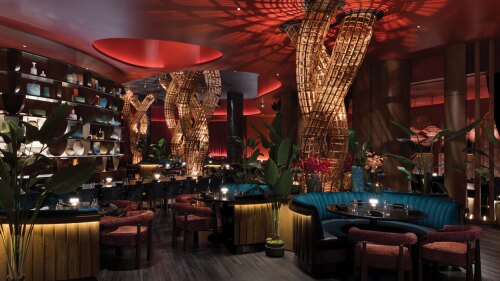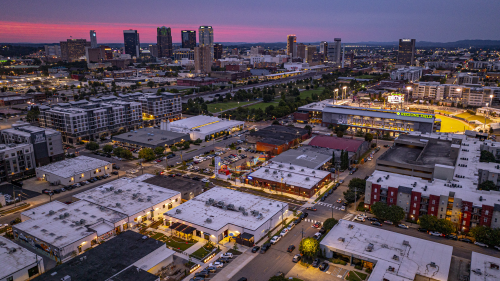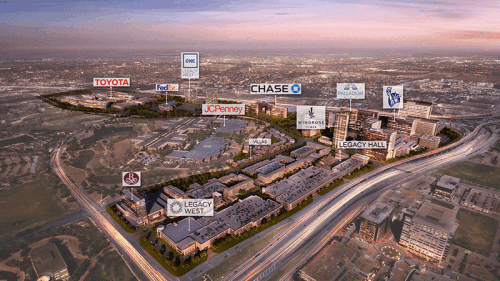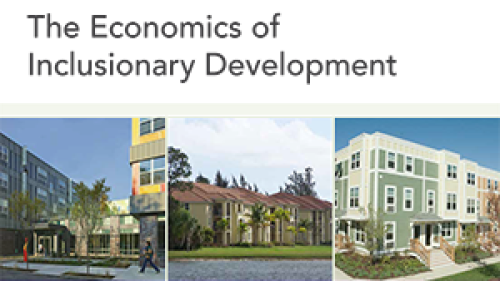Property Types
Hotels and Resorts
The hotel industry in the United States faces complex challenges in 2025, according to Jan Freitag, national director of hospitality analytics for the CoStar Group. During the “State of the U.S. Hotel Industry” presentation at the ULI 2025 Spring Meeting in Denver, Colorado, Freitag highlighted the challenges facing the hotel business amid macroeconomic uncertainty.
Once a sprawling expanse of uncharted land, Las Vegas, Nevada, has evolved into the entertainment capital of the world, a gaming super-hub, and a premier destination for sports. This remarkable transformation didn’t happen overnight; it stemmed from decades of strategic planning, investment, and visionary zoning recommendations.
Las Vegas is unlike any other place in America. Each year it draws more than 40 million visitors to the dazzling casinos and hotels that “turn night into daytime”—and transform the city into a glittering jewel in the desert. With 164,000 hotel rooms, Las Vegas is the largest hospitality market in the U.S.—outpacing Orlando, Florida, the next biggest market, by approximately 15 percent, according to JLL.
Industrial
Standing in the shadow of Regions Field and within earshot of Railroad Park, Birmingham’s Urban Supply hints at what the next chapter of downtown life could look like. Once-quiet brick warehouses are being steadily reimagined into patios, storefronts, and gathering spaces along a new pedestrian alley. Early tenants have begun to open their doors, and programming is slowly bringing people into the district. While the project is still in its early stages, the framework is in place for a vibrant hub that will grow block by block in the years ahead.
What trends are shaping the future of the industrial sector? Four experts from ULI’s Industrial and Office Park Development Council talk about the industrial submarkets and property types that offer the greatest opportunities, challenges developers face in bringing new projects to market, ways artificial intelligence and emerging technologies are reshaping the sector, tenant priorities, and other key trends.
After a quiet first half of 2024, CMBS originations increased 59 percent in Q3 on a year-over-year basis, according to the Mortgage Bankers Association’s Quarterly Survey.
Mixed-Use
“Mixed-use developments mean we stop thinking so much about buildings as buildings but as communities,” said Richard Vogel, senior vice president and general manager of Ivanhoe Cambridge China, at ULI’s Asia Pacific Summit. These substantial and often iconic developments are a weighty undertaking, crucial to the regeneration and improvement of cities, particularly in rapidly urbanizing countries such as China and India.
“The attributes of the single-family house are becoming obstacles to aging in place well,” with the distance from shops and services and the lack of walkability, said Ellen Dunham Jones, architecture professor at the Georgia Institute of Technology. “We need to link the needs of the aging population with dead big-box stores and dying malls.”
Telecommuters are an expanding workforce sector with needs different from those of typical workers. Many of these needs could be met by a new type of home-office building. In addition, energy efficiencies and an improved quality of life for telecommuters could be achieved.
Multifamily
What millennials will do once they marry and have children, a restrictive lending environment, and flat income growth were among the topics discussed at the third annual Butcher Forum, an invitation-only gathering in April of the top executives who represent the multifamily housing industry in the United States.
“Suburbs isn’t a dirty word,” declared Adam F. Ducker, RCLCO managing director and moderator of the “Next Stop Suburbs” session at the ULI Spring Meeting in Philadelphia.
How can cities increase density while enhancing livability? Members of ULI’s product councils discuss the challenges that developers and municipalities face when densifying urban and suburban areas, working with public concerns, and keeping cities attractive.
Office
In the late 2000s, Anthony E. Malkin, chairman and chief executive of Empire State Realty Trust, joined forces with a coalition of businesses and environmental organizations to launch an ambitious $20 million retrofit of the Empire State Building with the aim of reducing the iconic New York City office tower’s energy consumption and greenhouse gas emissions by more than one-third.
One of the largest eat/work/ play/live developments in Texas, the $3 billion Legacy West project is attracting companies like Toyota, FedEx, JPMorgan Chase, and Liberty Mutual by focusing on the interests of generation X and millennial employees.
Vacancy in the U.S. office market inched up by 10 basis points (bps) during the first quarter of 2016 (Q1 2016), rising to 13.2 percent, according to the latest analysis from CBRE Group Inc. Even with the increase, the national office vacancy rate remains at the lowest level since 2008.
Residental
Combining the best of urban and suburban living, they will meet the needs of more demographic groups, according to a new ULI report, Demographic Strategies for Real Estate, prepared for ULI’s Terwilliger Center for Housing by John Burns Real Estate Consulting.
The potential and limitations associated with inclusionary zoning, a tool used by a growing number of U.S. cities to encourage or require workforce housing development, are explored in a new ULI report, The Economics of Inclusionary Development.
Newly released data and analysis from several sources illustrate a major obstacle to a fully healthy housing market in the United States: the nation is not building nearly enough new residential units.
Retail
For decades, civic leaders have tried to revitalize Market Street, San Francisco’s central thoroughfare, only to see their efforts founder. “I sometimes call it the great white whale of San Francisco,” says Eric Tao, managing partner at L37 Development in San Francisco and co-chair of ULI San Francisco. “Every new mayor, every new planning director, every new economic development director has chased that white whale.” This year, however, an international competition of ideas hosted and run by ULI San Francisco, with support from the ULI Foundation, generated fresh momentum for reimagining the boulevard. The competition drew 173 submissions from nine countries and sparked new conversations about the future of downtown San Francisco.
The OAK project began in 2009, when a development firm set their sights on the corner of Northwest Expressway and North Pennsylvania Avenue, the state’s most important and busiest retail intersection. As the region’s only parcel capable of supporting a vertically integrated project of this scale and density, that land represented an opportunity to create something truly special.
As aging retail continue to evolve, one increasingly popular trend has been to redesign malls as town centers—recalling a time when such commercial districts were the heart and soul of a community. Mall–to–town center retrofits are emerging throughout the nation, especially in suburban communities, where pedestrian-friendly, mixed-use environments are highly attractive to millennials now raising families.

















